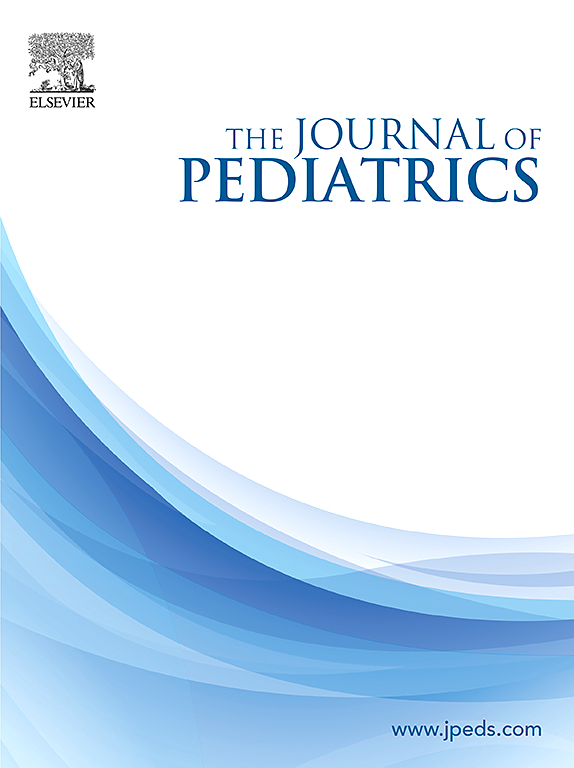根据参议院第8号法案,德克萨斯州先天性畸形婴儿的医疗保健利用率增加。
IF 3.5
2区 医学
Q1 PEDIATRICS
引用次数: 0
摘要
目的:评价禁止早期堕胎的德克萨斯州参议院第8号法案(SB8)对先天性畸形婴儿医疗保健利用的影响。研究设计:查询德克萨斯州住院患者公共使用数据文件以了解德克萨斯州住院患者的就诊情况。结果:在1,149,242名婴儿住院患者中,204,580名为先天性异常患者。SB8后异常入院比例由17.1%上升至19.0% (p结论:SB8后先天性异常患儿住院次数和费用明显增加。虽然这些病人只占入院人数的一小部分,但他们的护理费用在医院费用中所占的份额不成比例,在SB8之后增加了18.9亿美元。未来的研究应探讨门诊费用和堕胎限制后的长期结果。本文章由计算机程序翻译,如有差异,请以英文原文为准。
Increase in Health Care Utilization of Texas Infants with Congenital Anomalies Following Senate Bill 8
Objective
To evaluate the impact of Texas Senate Bill 8 (SB8), which bans early abortion, on health care utilization of infants with congenital anomalies.
Study design
The Texas Inpatient Public Use Data File was queried for inpatient encounters of Texas patients <1 year old between July 1, 2020, and June 30, 2023. Encounters were grouped as pre-SB8 (July 1, 2020-June 30, 2021) and post-SB8 (July 1, 2022-June 30, 2023). Descriptive statistics and bivariate analyses were used to compare rates of congenital anomaly admissions, mortality, length of stay, and hospital charges.
Results
Among 1 149 242 infant inpatient admissions, 204 580 were for patients with congenital anomalies. Post-SB8, the proportions of anomaly admissions increased from 17.1% to 19.0% (P < .0001). Mortality and length of stay of these admissions remained similar. However, total charges for congenital anomaly admissions increased by $1.89 billion to over $8.7 billion post-SB8 (P < .0001), accounting for 56.5% of all inpatient charges despite comprising a minority of admissions.
Conclusions
Following SB8, inpatient admissions and charges for infants with congenital anomalies increased significantly. Although these patients represent a small proportion of admissions, their care accounts for a disproportionate share of hospital costs and increased by $1.89 billion following SB8. Future studies should explore outpatient costs and long-term outcomes following abortion restrictions.
求助全文
通过发布文献求助,成功后即可免费获取论文全文。
去求助
来源期刊

Journal of Pediatrics
医学-小儿科
CiteScore
6.00
自引率
2.00%
发文量
696
审稿时长
31 days
期刊介绍:
The Journal of Pediatrics is an international peer-reviewed journal that advances pediatric research and serves as a practical guide for pediatricians who manage health and diagnose and treat disorders in infants, children, and adolescents. The Journal publishes original work based on standards of excellence and expert review. The Journal seeks to publish high quality original articles that are immediately applicable to practice (basic science, translational research, evidence-based medicine), brief clinical and laboratory case reports, medical progress, expert commentary, grand rounds, insightful editorials, “classic” physical examinations, and novel insights into clinical and academic pediatric medicine related to every aspect of child health. Published monthly since 1932, The Journal of Pediatrics continues to promote the latest developments in pediatric medicine, child health, policy, and advocacy.
Topics covered in The Journal of Pediatrics include, but are not limited to:
General Pediatrics
Pediatric Subspecialties
Adolescent Medicine
Allergy and Immunology
Cardiology
Critical Care Medicine
Developmental-Behavioral Medicine
Endocrinology
Gastroenterology
Hematology-Oncology
Infectious Diseases
Neonatal-Perinatal Medicine
Nephrology
Neurology
Emergency Medicine
Pulmonology
Rheumatology
Genetics
Ethics
Health Service Research
Pediatric Hospitalist Medicine.
 求助内容:
求助内容: 应助结果提醒方式:
应助结果提醒方式:


